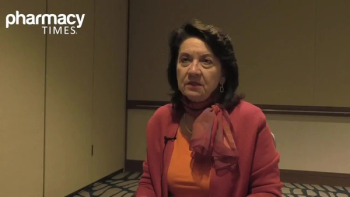
Haphazard Statin Use Harmful for Elderly
Use of statins among elderly patients without vascular disease continues to rise despite a lack of evidence demonstrating benefit in this population.
Use of statins among elderly patients without vascular disease continues to rise despite a lack of evidence demonstrating benefit in this population.
A research letter that appeared online in JAMA Internal Medicine examined this trend of high statin use in patients older than 79.
While statins can reduce cholesterol levels and have proven value in older adults who have already experienced a heart attack or stroke, the authors noted that the very elderly without vascular issues have the highest rate of statin use in the United States.
Their patient sample included 13,099 individuals who participated in the 1999-2012 Medical Expenditure Panel Survey. Those without coronary heart disease (CHD), stroke, or peripheral vascular disease were defined as primary prevention statin users, while those with vascular disease were defined as secondary prevention statin users.
The researchers found the rate of statin use significantly increased from 8.8% in 1999-2000 to 34.1% in 2011-2012 among the primary prevention population, even though there is slight randomized evidence to guide such prescribing for the very elderly.
In fact, current statin treatment guidelines do little to differentiate among patients in different age groups and tend to err on the side of overprescription. One of the statins evaluated in this analysis, rosuvastatin (Crestor), currently holds the 4th spot on the
While the scope of this analysis did not consider whether or not the increased statin use was associated with negative outcomes, the authors nonetheless advised against copious prescribing.
“Although the medical community has embraced the use of statins for primary prevention in the very elderly, caution should be exercised given the potential dangers of expanding marginally effective treatments to untested populations,” they concluded.
Research co-investigator Mike Johansen, MD, MS, of Ohio State University exclusively told Pharmacy Times that, “at present, our knowledge about side effects is limited,” though he noted that generally, “potential side effects include muscle aches, memory loss, liver toxicity, and gastrointestinal (GI) distress.”
The FDA in 2012
A recent study published in Cell Metabolism investigated the idea that statins may yield an off-target reaction that disturbs muscle mitochondria function. This happens when statins administered in their acid form turn into lactone form. Lactones may interefere with the cell's ability to produce ADP, which in turn has been associated with disrupted mitochondria function.
Official warnings and research not withstanding, other studies
In the absence of good evidence for this age group, Dr. Johansen said it is better to “consider an individual’s cardiovascular risk factors in association with their general health and care goals” when considering statin use.
Newsletter
Stay informed on drug updates, treatment guidelines, and pharmacy practice trends—subscribe to Pharmacy Times for weekly clinical insights.




















































































































































































































